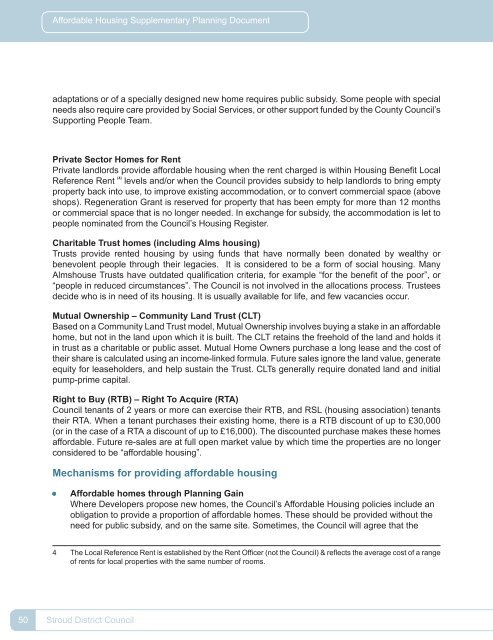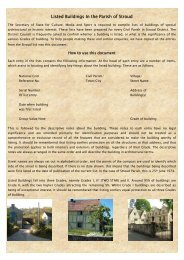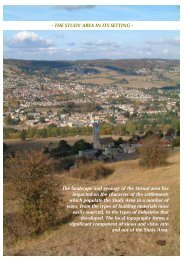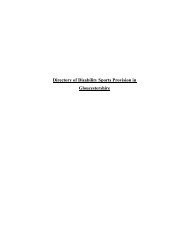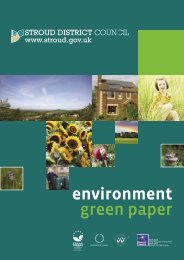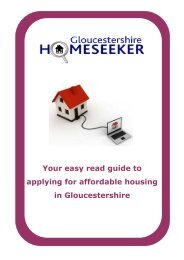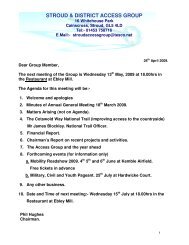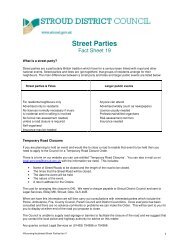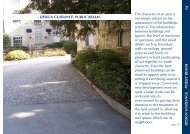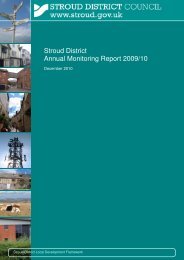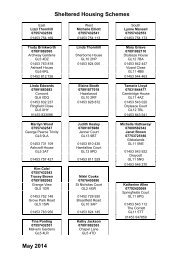Affordable Housing Supplementary Planning Document (PDF 736 KB)
Affordable Housing Supplementary Planning Document (PDF 736 KB)
Affordable Housing Supplementary Planning Document (PDF 736 KB)
You also want an ePaper? Increase the reach of your titles
YUMPU automatically turns print PDFs into web optimized ePapers that Google loves.
<strong>Affordable</strong> <strong>Housing</strong> <strong>Supplementary</strong> <strong>Planning</strong> <strong>Document</strong><br />
adaptations or of a specially designed new home requires public subsidy. Some people with special<br />
needs also require care provided by Social Services, or other support funded by the County Council’s<br />
Supporting People Team.<br />
Private Sector Homes for Rent<br />
Private landlords provide affordable housing when the rent charged is within <strong>Housing</strong> Benefit Local<br />
Reference Rent (4) levels and/or when the Council provides subsidy to help landlords to bring empty<br />
property back into use, to improve existing accommodation, or to convert commercial space (above<br />
shops). Regeneration Grant is reserved for property that has been empty for more than 12 months<br />
or commercial space that is no longer needed. In exchange for subsidy, the accommodation is let to<br />
people nominated from the Council’s <strong>Housing</strong> Register.<br />
Charitable Trust homes (including Alms housing)<br />
Trusts provide rented housing by using funds that have normally been donated by wealthy or<br />
benevolent people through their legacies. It is considered to be a form of social housing. Many<br />
Almshouse Trusts have outdated qualification criteria, for example “for the benefit of the poor”, or<br />
“people in reduced circumstances”. The Council is not involved in the allocations process. Trustees<br />
decide who is in need of its housing. It is usually available for life, and few vacancies occur.<br />
Mutual Ownership – Community Land Trust (CLT)<br />
Based on a Community Land Trust model, Mutual Ownership involves buying a stake in an affordable<br />
home, but not in the land upon which it is built. The CLT retains the freehold of the land and holds it<br />
in trust as a charitable or public asset. Mutual Home Owners purchase a long lease and the cost of<br />
their share is calculated using an income-linked formula. Future sales ignore the land value, generate<br />
equity for leaseholders, and help sustain the Trust. CLTs generally require donated land and initial<br />
pump-prime capital.<br />
Right to Buy (RTB) – Right To Acquire (RTA)<br />
Council tenants of 2 years or more can exercise their RTB, and RSL (housing association) tenants<br />
their RTA. When a tenant purchases their existing home, there is a RTB discount of up to £30,000<br />
(or in the case of a RTA a discount of up to £16,000). The discounted purchase makes these homes<br />
affordable. Future re-sales are at full open market value by which time the properties are no longer<br />
considered to be “affordable housing”.<br />
Mechanisms for providing affordable housing<br />
<strong>Affordable</strong> homes through <strong>Planning</strong> Gain<br />
Where Developers propose new homes, the Council’s <strong>Affordable</strong> <strong>Housing</strong> policies include an<br />
obligation to provide a proportion of affordable homes. These should be provided without the<br />
need for public subsidy, and on the same site. Sometimes, the Council will agree that the<br />
4 The Local Reference Rent is established by the Rent Officer (not the Council) & reflects the average cost of a range<br />
of rents for local properties with the same number of rooms.<br />
50<br />
Stroud District Council


